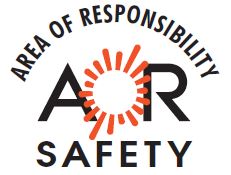Title Page
-
Client / Site
-
Conducted on
-
Prepared by
RACK STORAGE...
-
1. Racking is inspected daily using the Aisle Inspection Form?
-
2. Damaged racking is immediately tagged out and inventory removed until repairs are completed? Racks must be tagged out physically and also in SAP (if applicable).
-
3. Racking uprights are anchored to the floor?
-
4. Corner uprights protected by rack guards?
-
5. Load capacity is displayed on racks?
-
6. Pallets have runners resting on back and front beams with no pallet overhang in excess of 6 inches?
-
7. Process in place to preferentially direct over-sized and heavy pallets into bottom level or bulk locations.
-
8. Pallets are not double-stacked on the top tier unless approval is documented on a Product Storage Exception Form?
-
9. At least 6 inches of flue space is maintained?
-
10. When pallets are broken to pick product, the material remaining is securely re-wrapped or banded?
-
11. All pallet openings are equipped with decking or bracing that is evenly spaced to prevent pallet fall-through?
-
12. All pallet openings are equipped with wire mesh decking?
-
13. Rack storage is free of hanging stretch wrap and plastic banding?
-
14. Beams have drop-in style pins or are secured by nuts and bolts?
-
15. Pallet stops are installed on back-to-back racking to maintain flue space and prevent pallet pushover?
-
16. Racking professionally surveyed annually to ensure integrity and that beams are properly secured and no pins or bolts are sheared off?
BULK STORAGE...
-
17. Bulk storage areas are inspected daily using the Bulk Storage Inspection Form?
-
18. All unstable loads are corrected immediately?
-
19. No stack height exceeds 20 feet? (3-high paper rolls at corrugators excluded)
-
20. Bulk stacking does not exceed 4-high unless approval is documented on a Product Storage Exception Form?
-
21. Baled corrugated under 40 x 48 size is only stored 3-high unless a 4th level pallet is used to lock the stack?
-
22. Loads in bulk have equal-sized pallets (or decrease in size as the stack ascends) and are stacked even and square (not twisted)?
-
23. Product in bulk are stacked straight and are not leaning against walls, doors, racks or other objects?
-
24. PIT operators are observed placing pallets squarely in storage locations without pushing into existing pallets/walls/doors/racks?
-
25. Safe stacking techniques (locking pallet, stair stacking, pyramid stacking) are used whenever possible?
-
26. Bulk storage areas have floor markings which clearly indicate where product belongs?
-
27. Structural building columns are guarded?
-
28. There is a visual indicator (wall/column painting or conduit) of the 20 foot maximum stacking height?
SHELF STORAGE...
-
29. Shelving is inspected daily using the Aisle Inspection Form?
-
30. Damaged shelving is immediately tagged out and inventory removed until repairs are completed? Shelves must be tagged out physically and also in SAP (if applicable).
-
31. Items not properly stored in shelving are corrected immediately?
-
32. Industrial-type shelving is used for all industrial applications?
-
33. Shelving is used only for small quantities of product and not pallet storage?
-
34. No corrosive or flammable chemicals stored on shelves? Must be stored in appropriate chemical storage cabinets.
-
35. Load capacity is dispayed on shelves?
GENERAL PRECAUTIONS/TRAINING...
-
36. Damaged pallets are not used?
-
37. No permanent workstations near unguarded overhead product storage areas?
-
38. Staged materials and customer returns are stacked in a safe and stable manner in clearly marked areas.
-
39. Chemical product is stored appropriately (adequate protection, secondary containment, safe from incompatibles) and safety datasheets are available?
-
40. A current, approved Product Storage Exception Form listing all product storage exceptions is posted in the work area?
-
41. The posted Product Storage Exception Form indicates that there are no product storage exceptions required at the site? (Verified by observation of storage areas)
-
42. Team members use Stop Work Authority when encountering unsafe loads during unloading?
-
43. Once an unsafe load are identified, site has process to escalate, document and address issue?
-
44. Product safety specifications are communicated to suppliers? (e.g. pallet size, stacking, wrapping, etc.)
-
45. There is evidence that product not meeting product safety specifications is documented as non-conforming product (Quality proccess/group should be engaged) and issues are escalated to suppliers?
-
46. Production team members complete annual training in product storage guidelines?
-
47. Product storage at the site does not exceed 95% capacity?
-
48. Product storage at the site does not exceed 88% capacity?
-
49. The site assesses itself against the Safe Product Storage Standard at least annually?
Reviewed By
-
Assessor Acknowledgement
-
Select date
-
Division Acknowledgement
-
Select date











